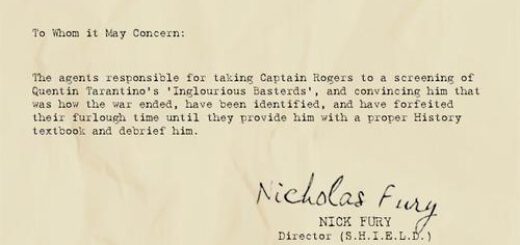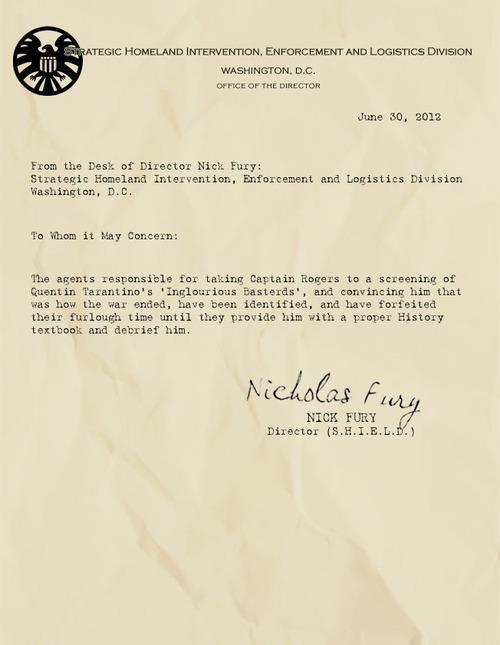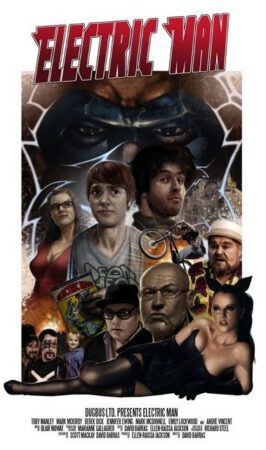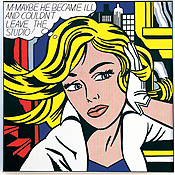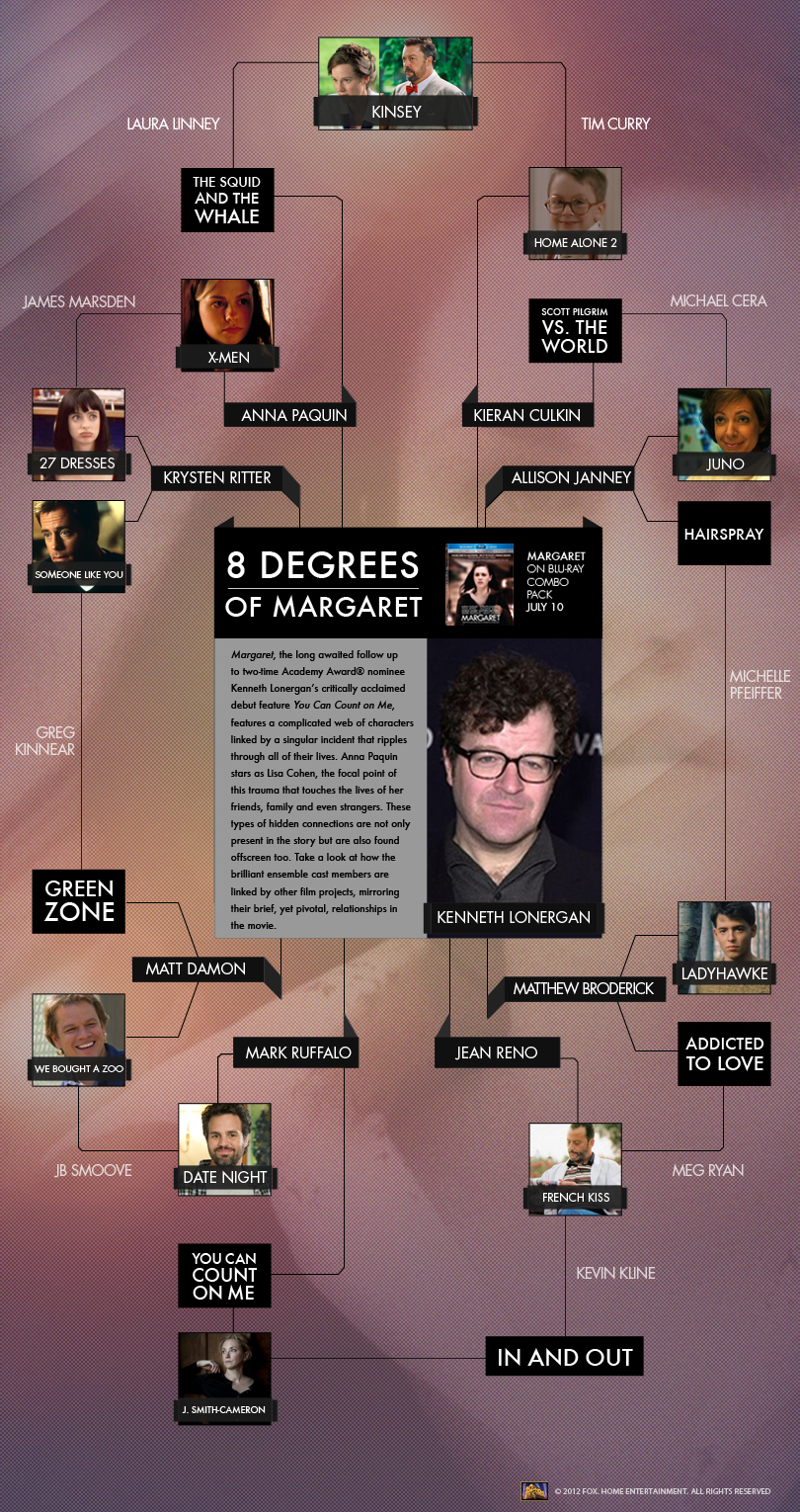First Commentary by Adam-Troy Castro
Rear Window (1954). Directed by Alfred Hitchcock. Screenplay by John Michael Hayes, from the story by Cornell Woolrich. Starring James Stewart, Grace Kelly, Wendell Corey, Raymond Burr, Thelma Ritter. 112 minutes. *** 1/2
Rear Window (1998). Directed by Jeff Bleckner. Screenplay by Larry Gross and Eric Overmyer, from the story by Cornell Woolrich. Starring Christopher Reeve, Darryl Hannah, Robert Forster. 89 minutes. **
Other Related Films: Too many ripoffs and homages to count, among them Disturbia (2007), which is so similar to Woolrich’s story that the owners of the film had to go to court to get a ruling that they hadn’t violated Rear Window’s copyright.
This one’s an oddity, folks: a remake that was actually based on a breathtakingly brilliant idea for a variation on a movie that was a classic to begin with, that nevertheless utterly failed to live up to its promise.
The source was the short story “It Had To Be Murder,” by suspense great Cornell Woolrich, all about a man temporarily laid up with a broken leg who has nothing better to do while he heals than look out the window and watch the lives of his neighbors. As it happens, one of those neighbors has a murderous secret involving the sudden disappearance of his wife. Our hero gradually pieces together the clues – all predicated on his neighbor’s odd behavior, all of which has other potentially innocent explanation — and ultimately brings the malefactor to justice.
There is no girlfriend in the story, no great emotional character arc linking the mystery to a pivotal crisis in the hero’s life. It’s just something that happens to him, something that makes his brief existence as an invalid a little more interesting than it might have been otherwise. (Other Woolrich stories are more emotionally fraught: the failure of SOME great moviemaker to adapt his horrific stunner, “Momentum,” remains a mystery.) The subsequent movies required more, and are in at least case significantly more satisfying.
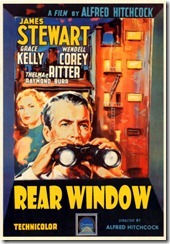
The Original
The 1954 version written by John Michael Hayes and directed by Alfred Hitchcock presents us with the case of one L.B. (nickamed “Jeff”) Jefferies (James Stewart), an international action photographer who is laid up in his rarely-used Greenwich Village after getting a killer photo of a race car wreck, which he evidently got from standing in the road while the twisted wreckage spun ass-over-teakettle toward him. (In a sense: serves him right). We gather from much of the dialogue about his activities, taking photos in hot spots around the world, that getting the impossibly dangerous shot is his specialty. The man is a danger junkie, now confined to a wheelchair and about to go crazy as he waits the last few days for his cast to be taken off. He’s an action hero reduced to inaction hero. He has nothing better to do than to look out the rear window and watch the lives of his neighbors.
The courtyard his tiny apartment overlooks is one of the great indoor sets in the entire history of the movies. It is a complete, living neighborhood in and of itself, comprised of a number of different buildings of different design, overlooking a central area where the inhabitants have carved out flower beds and little patches of lawn. There’s even an alley, through which Jeff can see the street, and passing cars. For the 112 minutes of the movie, the action never moves from this place, except to pull deeper into Jeff’s apartment where he has conversations of varying import with his visiting nurse Stella (Thelma Ritter), his old war buddy Tom Doyle (Wendell Corey), and his socialite girlfriend Lisa (Grace Kelly), who is pressing him for further commitment.
The first thing to note here is that this is a guy who honestly cannot decide whether he wants to be married to Grace Kelly. This is a plot point that has appalled friends I’ve shown the film. But some men do flee domesticity, and one of the grand, subtle jokes of the vast multi-layered tableau that fes Jeff as he looks out his window and spies on the outside world is that every single life he spies upon presents him with another possible future, depending on whether he says yea or nay to Lisa. There’s the pair of ardent honeymooners, pulling down the shades and initiating an implied marathon love-making session that seems to go sour after only a couple of days; there’s “Miss Lonelyhearts,” the miserable woman stuck in a particularly miserable and increasingly despairing singlehood; there’s “Miss Torso,” the good-time party gal who always has men hanging around and represents the erotic opportunities Jeff might enjoy if he ever lets Lisa go; there’s the middle-aged couple with the little dog, who every night drag their mattresses out to the fire escape and snore away in relative comfort, all sense of passion gone; and finally, there’s the Thorvalds, whose marriage has turned toxic, and who have so little to say to one another that they’re almost always visibly in separate rooms, framed by different windows. It’s worth noting that nowhere in this slice of life are there any children. Children would fall outside the metaphor, which is like all great dramatic metaphors felt without any particular effort to underline it. What Jeff sees is very firmly the face of Jeff’s dilemma. The second thing to note here is that all of these spied-upon characters have an arc of sorts, played with perfect modulation as the drama in the Thorvald apartment – where the much put-upon husband (Raymond Burr) appears to have offed his wife – takes center stage. Almost all of them pay off. So does the drama in Jeff’s apartment, where in between banter with Stella and romantic complications with Lisa, he resists and then embraces his obsession with Thorvald’s apparent crime. It’s a marvelously layered film, with comedy and relationship drama and even questions over the creepiness of Jeff’s activities all braided together in a tapestry of remarkable design. These days, some viewers may find it requires patience. But it rewards that patience. I don’t think it has a single dull moment, and key among its best attributes is the way the clues to Mrs. Thorvald’s murder don’t just pile up in some facile way, but at times offer competing explanations, and reasons to turn away.
Nor is Jeff given a free ride on the moral issues. His voyeurism – hardly asexual, but certainly bored – is criticized by everybody in his circle, and the movie takes delight in using this to indict the audience. The moral issues are so nuanced that it is even possible to feel sorry for Thorvald, after everything Jeff has put him through in order to prove his case. Thorvald is not an evil man, per se; just a very unhappy, very weak, very trapped one who has done a horrendously evil thing, and when he confronts Jeff (who he presumes to be a blackmailer) with an anguished, “What do you want from me?”, that one line is likely the most empathetic moment of Raymond Burr’s career.
But then all the performances in the film work at an equal level. It is among the best films of James Stewart’s career and one of the best of Grace Kelly’s. Even the supporting players across the courtyard inhabit their roles with grace and a deep sense of humor. It’s very nearly a perfect film, and though it’s been imitated a dozen times, it’s hard to think of any wrinkle that would even stand a chance of improving on it.
Enter Christopher Reeve.
The Remake
The sad but stirring twist in the life of Christopher Reeve is so well known that it need not be recapped here; suffice it to say that I concur with author Brad Meltzer’s take on the man, that he achieved fame by playing the indestructible Superman and greatness standing in the mortality of all of us Clark Kents.
I don’t hold with the popular wisdom that Reeve was never great on screen except as Superman; I would argue that he was pretty damn chilling as a sociopathic playwright in Deathtrap, and pretty damn good a couple of other times. He was certainly no liability in Remains Of The Day opposite Anthony Hopkins and Emma Thompson. performed in front of the camera on several occasions following the terrible accident that made him a quadriplegic, and was therefore a natural when somebody hit upon the startling brainstorm of casting him as the lead in an updated Rear Window. Why wouldn’t it work? Jeff in the original is pretty damned vulnerable as a man of action who has been sidelined by a mere broken leg; how much more helpless will his character be, when he cannot move a muscle under his shoulders, and requires live-in help just to get a cup of water when he wants one? Wouldn’t that ramp up the scares even more?
This is not a unique idea. As it happens, there is an entire subgenre of what we’ll now call “handicap thrillers,” involving physically impaired characters who must overcome their limitations in order to overcome the evil intentions of various murderers and thugs. Among them: the terrifying Wait Until Dark, which starred Audrey Hepburn in the adaptation of the Broadway play about a “world champion blind woman” terrorized by gangsters searching for a cache of drugs in her apartment; See No Evil, which pit a blind Mia Farrow against another murderous plot; and Mute Witness, about a woman who…well, you can figure out the rest. There are even other thrillers featuring lead characters in wheelchairs. Hell, thriller writer Jeffery Deaver has written a pretty damn terrific series of novels about his quadriplegic forensic scientist Lincoln Rhyme, one of which was made into an unfortunately not-very-good movie with Denzel Washington and Angelina Jolie.
The inherent claustrophobia of Rear Window should have worked wonders with the predicament applied to a quadriplegic, and with a quadriplegic we all loved in the lead.
And this much needs to be said: in spurts, Reeve is terrific. He always excelled at the dazzling smile during an emotionally vulnerable moment, and has several opportunities to pull off that trick here. Throughout this film, he has scenes that play off the heartbreaking realities of life as a one-time vital person reduced to immobility, including one where he regards a closet teeming with clothes that he will likely never wear again. Early scenes, with him in the hospital bleakly wishing he was dead, are downright painful to watch, in light of our certain knowledge that Reeve lived those moments and felt those feelings.
But – and boy, do I feel like a heel for advancing this case – he also sabotaged this movie’s effectiveness as a thriller from the get-go.
The problem is that, by the time it was made, Reeve was quite rightly an advocate for spinal cord research, and for state-of-the-art medical treatments for people with spinal cord injury…and as such, acutely aware that this movie, by far his most substantial acting role after the accident, was the best place to advocate for his cause. So he made demands, and nobody involved with the production had the heart or the good sense to say no to him. So it begins with him in the hospital, features him declaring that he will walk again someday, and includes scenes of him undergoing arduous physical rehabilitation to triumphant music long before he even gets to the apartment where he will observe the murder across the way.
This is absolutely fine if you’re making an issues drama of the challenges faced by quadriplegics, less fine if you’re making a thriller – a short TV movie, no less – where all these scenes take time and bleed tension from the story you’re supposed to be here to tell. Another problem arising from this is that, as a result of all this can-do spirit, the character he plays is exactly the same at the beginning of the movie as he is at the end; he doesn’t rise to the occasion, and he doesn’t learn about himself. His character arc is a straight line.
The story might have worked better if Reeve had been a despairing recent quad who imagined he had little to live for, for most of the film, and was brought back to some interest in life by his engagement with the murder scene across the street…a natural plot development given how many quads attempt suicide in the early years of their disability – but such attention to emotional realities, or at least dramatic ones, would have interfered with his personal mission to make this a hidden advocacy film.
Reeve’s advocacy harmed the film in another way. At the time, he also said he wanted to show the kind of tech available, to aid quadriplegics in living fulfilled lives. So there’s a lot of that, in his character’s home: including voice-activated computers that control the lights, the elevator, the phones, and so on. His character has an attendant in residence at all times, a fulfilling career with partners who respect him, and a beautiful woman who by the end of the movie will fall in love with him. This is all nice stuff to have. It doesn’t replace a functioning body, but it makes the transition to a disabled life as easy as it can be. So what we have, here, is quadriplegia as Christopher Reeve lived it – which, while it functions as drama, is absolute death when it comes to a film of suspense. Imagine he was a quad of more modest resources, living on disability, in a cramped space with only limited assistance – and THEN suspected that a murder was taking place across the street. This guy can afford to set up surveillance equipment, just in case he misses anything – and, by the way, unlike the original film’s protagonist, whose voyeurism bothered his nurse, his girlfriend, and his cop buddy, this guy’s video cameras are treated as cool stuff by almost everybody concerned. The voyeuristic aspects never receive substantive criticism.
Time hasn’t been kind to the concept, either. In 1954, the rarity of air conditioning – a factor in other Hitchcock movies discussed here in the past– meant that it was perfectly reasonable for the residents of a middle-class apartment complex to live their lives in full view, playing out entire dramas in view of their windows. In 1998, it doesn’t make nearly as much sense…especially since the Hitchcock provided a far more spacious courtyard with apartments set at varying angles and not the direct-line-of-sight posited by this movie. Also – as any thriller writer will tell you – the invention of the cellular telephone has been absolute hell on plotting, and its inclusion in the remake is no exception. Too, the killer here is a one-dimensional designated asshole, not nearly as interesting or as oddly sympathetic as Raymond Burr was in the original.
Finally, there is no wonderfully complex courtyard across the way: just a single dull edifice that fills Reeve’s line of sight and offers him what amounts to a collection in television sets in the form of conveniently-placed windows. There is no comparison to what we were given in 1954. It’s flat, in every sense of the word. This was not Reeve’s worst remake of a notable film: his last movie as a fully-abled man was a terrible version of Village of The Damned, and we will someday cover his participation in a truly unfortunate version of The Front Page. (It was called Switching Channels, and he played opposite Burt Reynolds and Kathleen Turner.) All we can say of this one is that it just didn’t work.
The View From The Apartment
1954 version, an undisputed classic. 1998 version, a missed opportunity.
*
And now, I watch from cover as the wife engages in sinister activities…
Second Commentary by Judi B. Castro
Rear Window (1954). Directed by Alfred Hitchcock. Screenplay by John Michael Hayes, from the story by Cornell Woolrich. Starring James Stewart, Grace Kelly, Wendell Corey, Raymond Burr, Thelma Ritter. 112 minutes. *** 1/2
Rear Window (1998). Directed by Jeff Bleckner. Screenplay by Larry Gross and Eric Overmyer, from the story by Cornell Woolrich. Starring Christopher Reeve, Darryl Hannah, Robert Forster. 89 minutes. **
Other Related Films: Too many ripoffs and hommages to count, among them Disturbia (2007), which is so similar to Woolrich’s story that the owners of the film had to go to court to get a ruling that they hadn’t violated Rear Window’s copyright.
I so wanted to like the 1998 rethink of Rear Window. I mean come on it had Superman starring and proving he just might really be. Besides, the original was really showing a few grey hairs (not just the one’s previously claimed by Jimmy Stewart). But, alas, it was not to be.
In 1954, and even up to the mid 70’s, it may have been commonplace for someone to become a temporary voyeur via injury or illness. Boredom had fewer releases than today, little television, no computers or video games. Books were limited at most libraries by budget and distance to said library. And most magazines came out monthly, so a long convalescence had a lot of downtime. So its believable that the Stewart character could easily start watching his summertime neighbors and playing mind games with himself. Its even possible that those same folks might not notice him watching, or could pass it off as just a friendly guy at his window. Creepy neighbor watching became the meme much later.
The things I find totally unbelievable for that time or EVER, is that any straight man, whether injured or not, rich or poor, or whatever, could have Grace Kelly in her most gorgeous state, throwing herself at him (and wantonly at that) and he can resist and actually ignore her! PUHLEEZE! Dude didn’t have a broken leg, They were feeding him large quantities of saltpeter. Next, the home nurse never insists he leave the apartment, just cleans him up and lets him hobble about his two rooms. Six to eight weeks in solitary confinement? Is that doctor recommended?
Now, how about that remake? I can believe that architect Christopher Reeve has enough cash reserve for all the wondrous toys both medical and electronic he buys after his accident. I’m sure he had much better access than the average newly paralyzed patient and just figured he could walk back into (so to speak) his job and most of his old life. Ummm… ??? How? Most of his firm’s partners would attempt to block him from anything to do with the job or the public and claim it was for his own sake.
Now, how about the crux of each thriller, the supposed murder of the neighbor’s wife.
In both films the murder is based on the supposition that a disappearing wife meant a murder had been committed. Neither is proven conclusively, but both disabled leads taunt the murderer into a full on attack. In the 1954 film, I honestly believe that Jimmy Stewart, hobbled or not, had a fighting chance against Raymond Burr. Not so with Chris Reeves. How could he? His ability to defend himself was purely run and hide. he couldn’t draw a gun or knife on his attacker, he could only call 911 if that. The suspense was only if he could breathe long enough for help to arrive. In other words, uhh, no really.
So, to sum up. 1998 had a good try at an update, but needed less disability to keep the suspense alive. 1954 needed a leading character who wasn’t wearing a giant “L” on his forehead for the whole film.
Like this:
Be the first to like this.
 I can’t decide if this is inspired or blasphemous.
I can’t decide if this is inspired or blasphemous.




